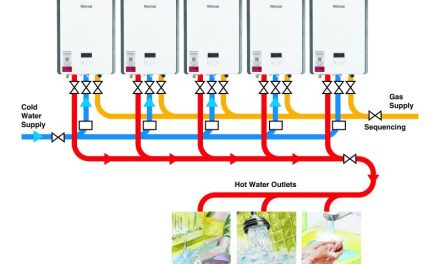By David Watkins, solutions director at VIRTUS Data Centres
Data centres are a critical part of our digital infrastructure and require a reliable, sustainable energy source to operate efficiently. Energy procurement in the data centre industry involves purchasing the required volumes of energy from the various sources available such as renewable energy, natural gas, coal and nuclear. This process can be complex – but it’s vital to ensure that data centres can meet their critical 24/7 power needs while also being cost-effective and sustainable.
In this article, we delve into the importance of energy procurement in the data centre industry and provide recommendations for getting it right.
Why energy procurement matters
Energy procurement is a crucial aspect of data centre operations as it determines the cost and environmental impact of the facility. In today’s world, sustainability has become a top priority and there is increasing pressure on data centres to improve efficiency, thereby reducing their carbon footprint and energy consumption.
Not only is energy procurement important for environmental reasons, but it also has significant financial implications for both the operator and customer. As data centres continue to grow in size due to strong demand, energy consumption increases, leading to higher facility energy costs. By choosing sustainable energy sources, data centres can reduce their energy expenditure, which can result in cost savings and improved competitiveness in the market.
The good news is that there have been plenty of developments and innovations to help operators make the right choices. For example, in recent years, Power Purchase Agreements (PPAs) have become a popular way for data centre companies to secure a reliable source of renewable energy. These agreements allow companies to directly purchase energy from a renewable energy provider over a set period of time. This assists with financing of new renewable projects, increasing the availability of renewable energy on the market and supports the growth of sustainable energy generation.
The cost of renewable energy has also decreased as technology improves and economies of scale are reached. This has made it a more competitive option for data centres and as demand for sustainable energy continues to rise, innovation and lower costs are expected in the future.
Key considerations when choosing a supplier
What are the key factors which data centre operators should consider when building an energy procurement process? There are several crucial considerations:
How green is the energy source? When evaluating energy sources for a data centre, it’s important to consider the environmental impact and reliability of the source. “Truly green” sources like hydro, solar and tidal energy have minimal impact and are considered the most sustainable options. However, they also depend on weather conditions and may not be 100% reliable. Biomass and nuclear energy may not produce carbon emissions directly, but they have negative impacts in other ways; biomass energy needs large amounts of crops or trees to be used for fuel, which can lead to deforestation and habitat destruction, and nuclear energy can be expensive to produce and can have long term waste disposal issues. Data centres should aim for a balanced portfolio of renewable energy sources to ensure consistent availability and reduce the risk of power outages.
Does it make commercial sense? The energy supplier must be able to provide power at a cost that makes sense for the data centre provider and its customers.
When considering the commercial viability of an energy supplier, it’s important to take into account the full cost of the energy, including all additional fixed costs such as transmission, losses, plus government levies and taxes. This will help ensure that the data centre can operate at a cost that makes sense for their business and customers. Additionally, it’s important to consider factors such as the supplier’s reputation for reliability and the terms of their contract.
Are the benefits passed on to customers? The data centre should ensure that any benefits from sustainable energy procurement are passed directly on to its customers in the form of competitive prices and improved services.
By procuring energy from sustainable sources, data centres can also improve their corporate image, which can help attract and retain customers. Overall, it is important for data centres to not only invest in sustainable energy procurement, but also to communicate the benefits to their customers in a clear and transparent way. Sustainability is a key business driver for many organisations, so being able to provide evidence of sustainable energy and practices can assist customers with their own sustainability goals.
Can I prove the origin of the energy I’m using? Another factor to consider is the certification of the energy. Renewable Energy Guarantee of Origin (REGO) certification verifies that the energy being used is truly renewable and sustainable. This certification can be easily checked by looking at the energy company’s annual fuel mix report, which is available online for public viewing.
By checking these fuel mix reports, data centre providers can make informed decisions about which energy suppliers align with their own sustainability goals. The UK also publishes its overall energy mix for each year, providing a larger perspective on the country’s energy usage and sources. This information can be useful for data centres as they make decisions about their own energy procurement and strive to do their part in achieving the UK’s net zero goals.
How to get energy procurement right
Having considered all the variables, how do operators put theory into practice and ensure they’re making the best decision for the business? We believe there are five key steps.
1. Understanding Energy Consumption: Get a clear picture of your energy consumption, including the amount needed and when it’s needed.
2. Assess Location: Location can significantly impact the cost and availability of energy, so consider the local energy sources and how they can be utilised.
3. Evaluate Suppliers: Research different energy suppliers, including their prices, contracts, and environmental impact.
4. Negotiate a Contract: Once you’ve found the right supplier, negotiate a contract that works for you, including a Power Purchase Agreement (PPA) to ensure access to sustainable energy.
5. Continuous Monitoring: Continuously monitor your energy consumption and supplier performance to ensure you’re getting the best deal.
By following these steps and taking a proactive approach to energy procurement, operators can make well-informed decisions that benefit both their business and the environment. Ultimately, striking the right balance in energy procurement can lead to increased efficiency, cost savings, and a more sustainable future for everyone.





